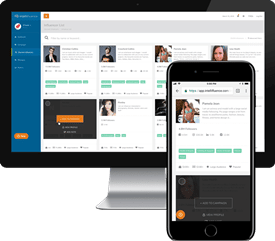Last Updated on June 8, 2020
In an online world full of competing marketers and influencers, authenticity is more important than ever. Being seen as trustworthy instantly makes you stand out from among any competitor who can’t. In online content marketing, any brand should be familiar with the term earned media, a form of content that can boost a brand’s visibility without sacrificing authenticity in the eyes of customers. Take a look at what earned media is and why it’s great for creating an authentic brand image.
What Is Earned Media vs. Paid Media?
In general, you can divide online marketing into three categories:
- Content your brand paid for, such as PPC ads, sponsorships, or influencer marketing deals.
- Content placed freely somewhere by your brand, such as the brand’s website or a guest blog.
- Content that is neither paid for nor placed by the brand, also known as earned media.
If a piece of content advertises your brand in some way, but wasn’t produced, published, or paid for by your brand, the content qualifies as earned media.
Why Is Earned Media Authentic?
Paid advertising is the least trusted form of media by the public. The primary reason is advertising overwhelm. People are being bombarded with ads almost everywhere they go. In fact, more and more people view ads as intrusive and untrustworthy.
Looking past paid media, content posted by your brand is a step closer to authentic. Still, many brands today are constantly promoting on their turf and doing little else. Once again, the problem becomes a feeling of impersonal bombardment. However, when a person sees someone unrelated to a brand talk about something about the brand for free, this activity creates a sense of social proof. When something seems popular enough for other people to talk about it, others naturally want to get involved as well.
Earned Media: More Valuable Than Ever
The current climate of online content has made earned media even more useful because social contacts have a strong influence on purchasing decisions. When friends on social media post about how much they’re enjoying a product, their interactions come off as more convincing than a direct ad. Put simply, earned media is how social media marketing takes off: Other people create content that advertises your brand solely out of a desire to do so. Earned media could also be reviews that you did not specifically request, press mentions, or negative attention by a competitor.
As the name implies, earned media must be “earned” or inspired by something else, such as through other earned media or your brand’s social media posts. But watch out: Even a social media marketing blunder that gets customers complaining would classify as earned media. The goal is both quantity, plenty of people naturally discussing your brand, and quality, which involves favorable discussions.
How Influencer Marketing Creates Quality Earned Media
You may think that influencer marketing and earned media are unrelated. After all, influencer marketing often involves paying influencers, whether with money or free products. However, a little clever planning can turn an influencer’s large, engaged audience into a snowball of positive earned media.
The key is to have influencers create content that encourages further content from their fans and followers. The easiest example would be shares on social media. When an influencer’s paid content gets shared by someone else, no money is exchanged for this boost in visibility, and the brand itself does not get involved. Thus, shares are a worthy goal, especially since they can beget more shares.
Some other examples of earned media include the following:
- Contests that require creating some form of content, such as artwork or a funny joke relevant to the brand.
- Content that inspires customers to interact with each other, such as a fitness brand creating a workout buddy program.
- Content where people get to make a difference or be heard, such as a poll for what product a brand should release next.
With any of these examples, your brand could create the content and influencers could be paid to promote it, you could pay the influencer to make and promote it, or you could arrange for something in between.
Start with the question, “What can we make that will get people interacting online?” When starting with a question like this one, instead of “How can we get clicks?” or “How can we get sales?”, you and an influencer can discover new and exciting ideas for viral, authentic marketing.
When measuring social media sentiment and how potential customers feel about your brand, you may see opportunities to come across to your target audience as more authentic. All businesses need to promote themselves and spend a little money on advertising, but by creating and paying for content to inspire additional, earned media, people will consider your brand worth trusting. That trust, in turn, leads to more earned media and a more active, passionate audience.

SallyBot is committed to helping users get the most out of Intellifluence. By helping brands create campaigns, providing unparalleled customer service and offering useful advice, nothing makes SallyBot happier than hearing she is liked… Really, really liked.






